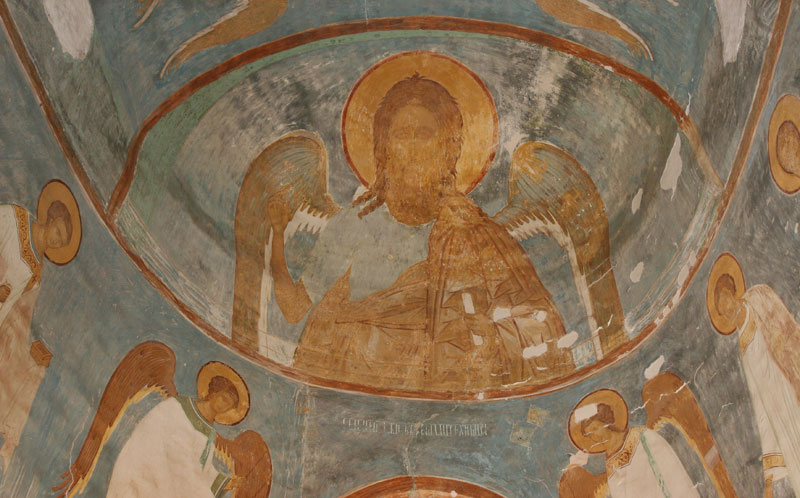
The representation of John the Baptist in a form of an angel (with wings) is based on the Old Testament prophecy of an angel sent by God to prepare the way for Him (Malachi 3:1). The New Testament (Matthew 11:10; Mark 1:2) attributes this prophecy to John the Baptist who prepared the way for the incarnated Christ; the last of the prophets, the precursor who announced the coming of Jesus Christ.
He is the son of Zechariah and his wife Elizabeth, a cousin of the mother of God. Called by “the word of God” (Luke 3:2) John the Baptist preached “in the wilderness of Judea” (Matthew 3:1) and “all the region around the Jourdan” (Luke 3:3). His preaching of repentance and the imminent coming of the Messiah and the Kingdom of heaven (Matthew 3:2) attracted a great deal of disciples and followers. As an outward sign of repentance and spiritual renewal John the Baptist chose a ceremony of “a baptism of repentance for the forgiveness of sins” (Mark 1:4, Luke 3:3), ablution in water that Jesus Christ among many others submitted to in waters of the Jordan. At this the covenant came true: “He on whom you see the Spirit descend and remain is the one who baptizes with the Holy Spirit.” (John 1:33) John the Baptist was executed by Herod Antipas for condemning his illegal marriage to Herodias. Feast days: 7 (20) January (Synaxis), 24 February (9 March), 24 June (7 July), 29 August (11 September). It is also depicted in the composition The Last Judgement (the Deesis) and in the Deesis above the western portal.
|

